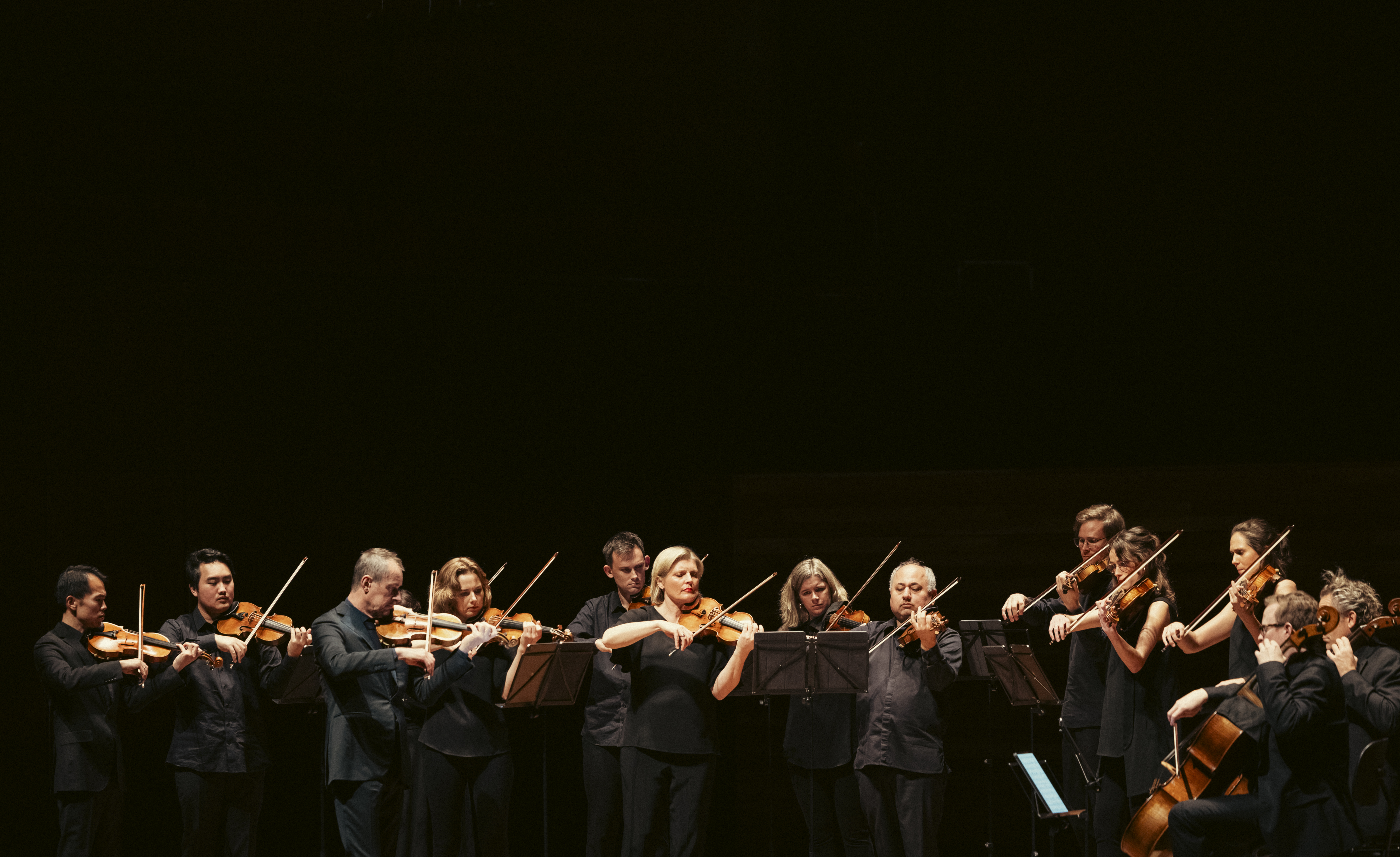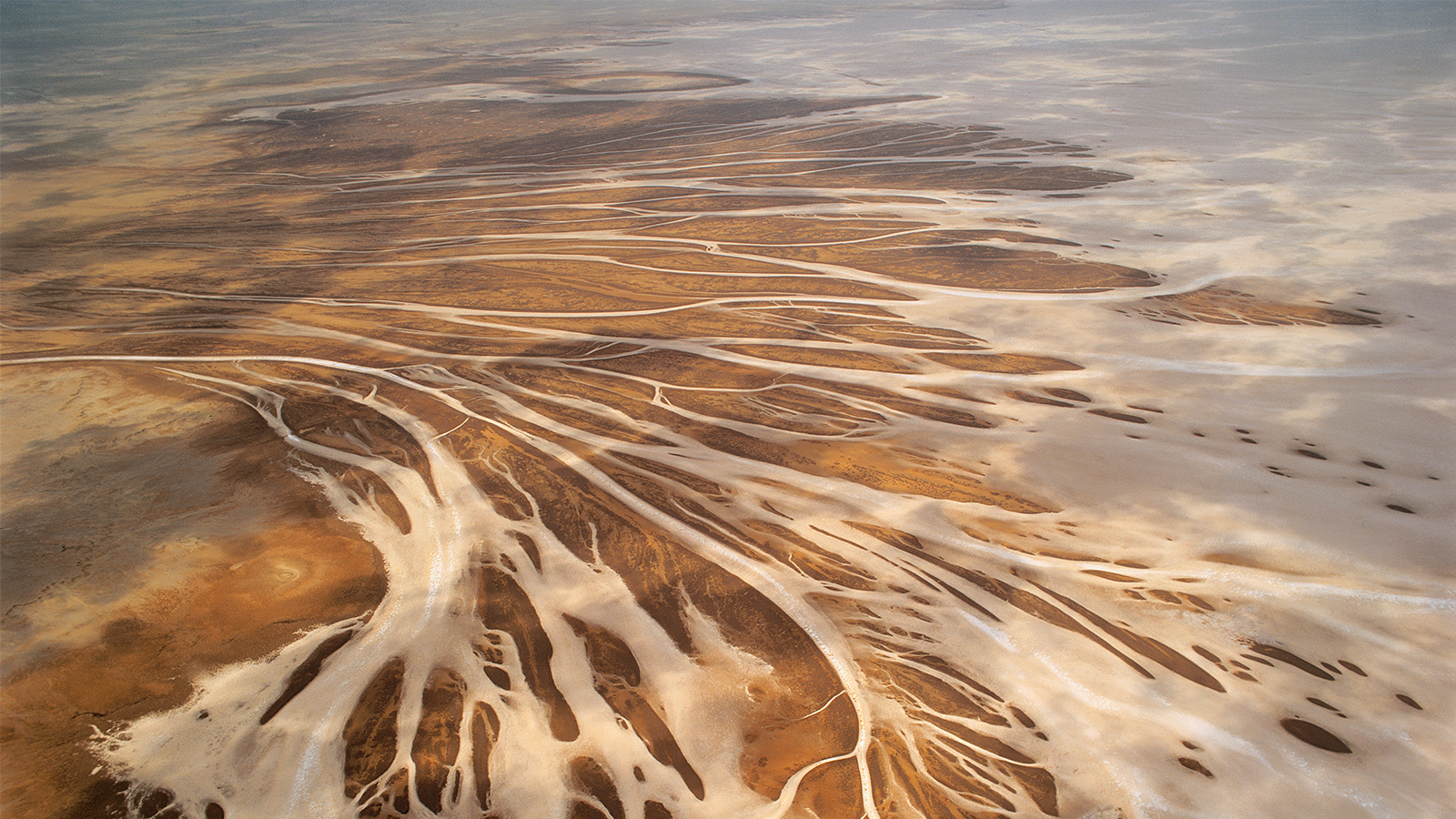
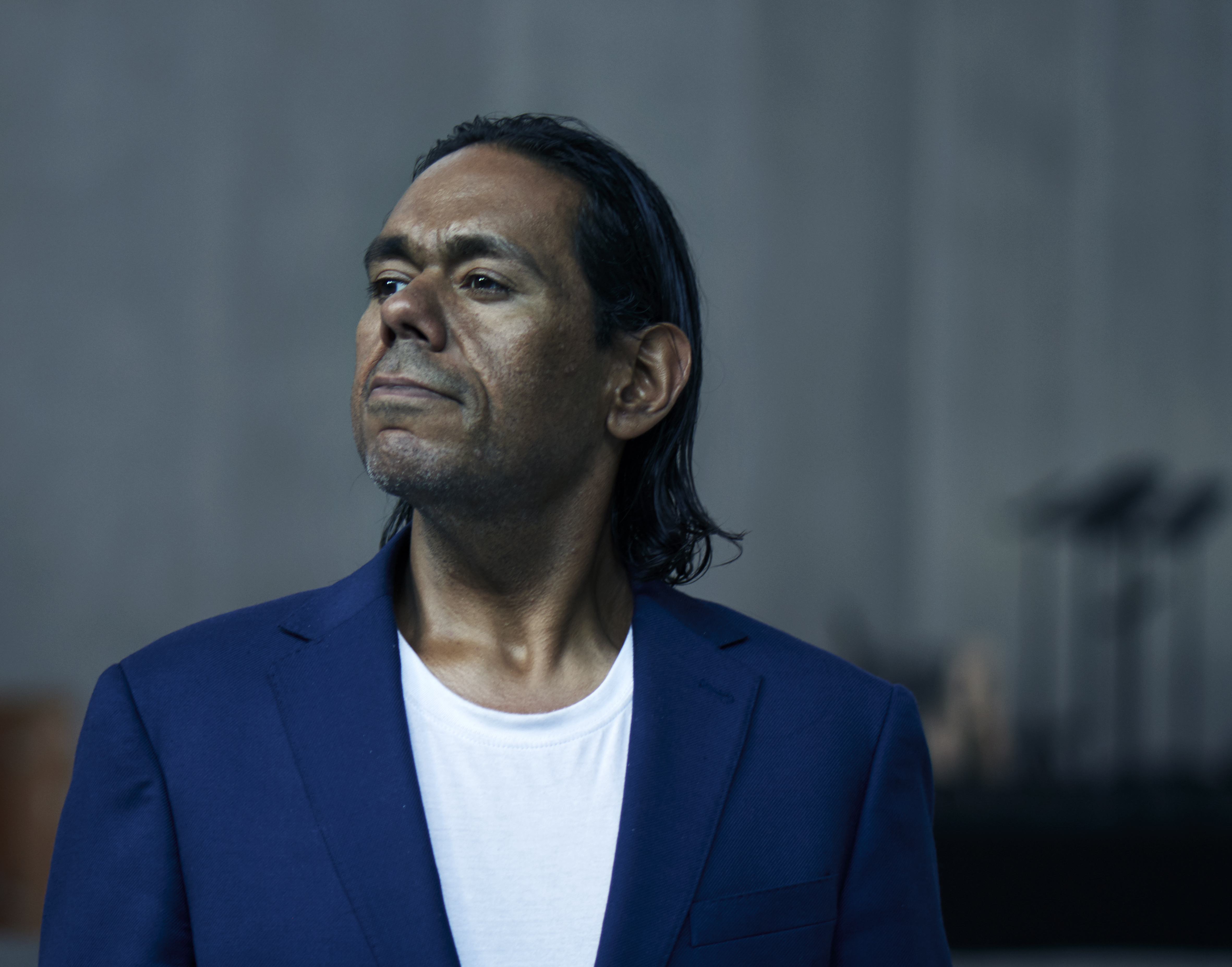
Sunlight refracts the river’s silver, shuddering surface, wind catches in the sparkling water. Amid sounds of riparian scrubs, green laces its banks and deep-brown earth mud smells and swells.
We are kin to rivers, connected in ecology and spirit. To speak of Indigenous peoples’ connection to rivers is to speak of the essence that sustains us in the world. The river is language, song, philosophy, ceremony, life-source, our social world. As with Munnim, whose name is in and of the water, the river constitutes who we are: freshwater people. The river also connects us to saltwater and desert people, the way we relate.
William Barton is a Kalkadunga man, a composer, producer, multi-instrumentalist and vocalist who’s recognised as one of the country’s leading yidaki (didgeridoo) players and composers. Here we yarn about Indigenous peoples’ deeply-woven connection to rivers.
In language you called it munniim-muniim: light on the quiet water… That was my name in the water. 1
– Countrymen: The life histories of four Aboriginal men – as told to Bruce Shaw
Our connection to rivers persists deep in our flesh, in how we relate to each other, even though colonisation has sought to sever these ties. William grew up in Mt Isa, where Leichhardt river ends, my mob is from Roper River on the other side of the Gulf of Carpentaria. Leichhardt River carries the name of the colonial explorer Ludwig Leichhardt, Roper River was named by him on one of his expeditions through Gulf country. The supposed death of Leichhardt gave Isaac Nathan (the “father of Australian music”) material for his 1845 composition Leichhardt's grave: an elegiac ode. This marked a shift in Nathan’s topical focus away from a sympathetic alliance with Indigenous peoples – previously he’d adapted a song based on verses from Eliza Dunlop’s 1838 poem The Aboriginal Mother – to a position aligned with the prevailing colonialist paradigm: celebrating “heroic” expeditions.
For William and I, this coincidence is a way for us to begin talking about our old people. “There’s those lullabies our grannies used to sing to us, you know, around the bushfire, by the river,” William mentions. It’s true: when I think of my Nana I think of Roper River, the songs she would sing me, her memories now wrapped in my own, when we would go driving down the river, swimming the cool water beneath blaring sun.
William tells me about Kalkadunga Country, which is at the heart of his music: “going back to homelands, what’s powerful is the rivers, they’re the bloodlines of mother country, and these bloodlines are interconnected with us, who we are”. To the blood that flows through our own arteries. In its connection to the ancestral essence of who we are, “there’s a purity to that water on Country and when you drink it, you embody the DNA of that land”.
The DNA of the land, these rivers, swell with creative spirit. Alexis Wright, in her graciously operatic novel Carpentaria (2006), writes of an Ancestral serpent come down from the stars billions of years ago. It went “scoring deep into – scouring down through – the slippery underground of the mudflats, leaving in its wake the thunder of tunnels collapsing to form deep sunken valleys” in the Gulf of Carpentaria. Sea water followed in the wake of this glistening serpent, ocean blues changed to the yellow of mud, filling the ancestor’s swirling tracks “to form the mighty bending rivers spread across the vast plains of Gulf country”. When it was done, it made one last river where it now lives, deep down in the earth. The serpent permeates everything, it is the river, and the river is it, “and is attached to the lives of the river people like skin”.
In Carpentaria the serpent is the river, the setting and the story itself – “it permeates everything. It is all around in the atmosphere” – so it is also the story listening back to itself. Here is storytelling as listening – to the river, its tidal breaths, its elation and strife.
This is the kind of significance the rivers hold for us. Rivers teach us how to be, to sing. “As I sing, I’m picturing my old people, my uncles and aunties – my ancestors – and it transports me to home Country, even though I might be singing alongside visuals [in River] that are from around the world,” says William.
It takes particular knowledge to hear and to sing the river. In September last year, three humpback whales appeared in the shallow waters of East Alligator River in Kakadu. The whales’ inexplicable detour into this river is something that is said to have never happened before, at least in recorded history. Two of the whales swum back out to sea, but one male remained in the river, in murky tidal waters too shallow and too warm for this 16-metre-long creature.
Whales are keepers of water song. Humpbacks sing for hours, complex arrangements of howls, sighs, and cries, deep echoes of ghost song. In the media, journalists quoted marine ecologists, scientific experts, who spoke of the humpback in bewilderment. What message does this whale bring and sing to the gleaming green river, for those who know how to listen?
I ask William about how he was introduced to music, to the yidaki. “I fell in love with the mystery of what that [yidaki] sound was, brother – it’s grounded, you know – and I wanted to be a part of that mystery and I still am.” Uncle Arthur Peterson, a tribal old man, who spoke several Indigenous languages and was a medicine man taught William how to play yidaki when he was 11 years old.
William’s music is entwined with the life and legacy of Uncle Arthur, and playing yidaki resounds Uncle Arthur’s connection to Country, just as Uncle Arthur’s playing did the ancestors before him. He was taught how to listen to the language of the instrument and passed his own yidaki onto William.
“The yidaki embodies everything of the land, because it’s from the tree, it’s the breath of life and the land, of sustenance to us as human beings. It embodies the history of those old trees. The yidaki has memories, it’s the breath of our ancestors, particularly when the instrument is passed on physically from one person to the next,” William tells me.
In That Deadman Dance (2010), Kim Scott writes of a clever man that can slip into the whale’s blowhole. He can “fly inland one moment, back to ocean the next”. Inside is like a “breathing cave that resonates with whale song”; the whale’s heart beats with the warmth of fire, the clever man embraces the blood-filled heart and lets his voice join with the whale’s roar, and the two sing together that song the clever man’s father taught him, “as the whale dives, down, deep”.
The water bulges, air from the whale’s spiracle bubbles up to the surface. The breath goes in and out of the blowhole, like the breath that travels through the didgeridoo, so that even if we don’t realise it, part of the whale songs travels through the didge’s reverberations.
Collaboration is an important part of William’s music. He’s worked with his mum Delmae Barton, who’s a singer, songwriter and poet, many times before. He tells me that, “even when I perform some of my string quartets where I’ve had Mum singing and improvising before, even if Mum’s not there, I can hear her voice in it. You know, it’s like when I was searching for a certain melody, that chant in the river, it’s a form of nurturing, like that, and passing on of language, river language.”
Our connection to rivers is expressed through relationships. Like mother to child, from one mob to another. It’s impossible to speak of Indigenous peoples’ bond to rivers without also speaking of the sea: this is part of the relation. The river and the sea connect us to each other, freshwater and saltwater people. Water sites are not only lively physical entities, with purpose and use in the connected environment, but they also have also social, emotional, cultural and spiritual significance.
Recently I was reading an interview with Sandra Harben, a deeply wise Whadjuk Nyungar Boodjar woman, who works as a researcher and cultural consultant. She tells of Waugal the ancestral spirit who lives in bilya (fresh water). Waugal lives in all freshwaters in the Nyungar world.
He is the Nyungar rainbow serpent, spirit of bilya and creator of Boodjar (Country). River systems sustain spirit and life – the two cannot be thought separately, because of the belief in Waugal the freshwater being and because they’re places “rich with sources of food, medicine and plants, and habitat for native species and birdlife”, to quote Harben.
Waugal is essential to life. Freshwater, the river, underpins the Nyungar belief system, as the place in which Waugal’s spirit resides. He cannot live in saltwater. Harben tells the story of the relation between warden (the ocean) and bilya. While at times when the tides rise, the ocean and the Swan River used to mix, there was – before the creation of Fremantle Port – a clear separation between the two. It was Waugal who created this separation. He “fought the saltwater crocodile so that the salt didn’t come down into the fresh water”. Waugal bit the tail off the crocodile who floated back out to see, his body forming the islands currently known as Carnac Island, Garden Island, and Rottnest Island.’ 2
Enmeshed but demarcated boundaries like the one between ocean and river are defined by language, cultural and sociopolitical practices, ecology, ceremony and by worldly actors who inhabit and take care of place. In Indigenous practices of place-making, boundaries transform undifferentiated space into specific localities, places and home. Harben goes on to explain how Nyungar law meant that Nyungar people never camped on the edge of freshwater. This ensured Waugal and the river ecology was respected and protected. Our connection to the river is about caring for, maintaining and conveying its stories.
These stories of creation are animated by everyday practice. The simple four-line hook of the 2002 pop song Down River by The Wilcania Mob, a hip-hop group of five young Indigenous musicians aged nine to 14, expresses joy and reverence of being-with the river:
When it’s really hot we go the river and swim
When we go fishin’ we catchin’ a bream
When the river’s high we jump off the bridge
When we get home we play some didge
I can still remember when I first heard this refrain, got it caught in my head. I didn’t think too much about it then. The Wilcania Mob would’ve been singing about Paroo River in the Murray-Darling Basin. The song reminded me of the place in the Swan River where’d I’d jump into the water from the branch of a tree. My Aunty fishing just upstream would yell at us kids that we’d scare the fish away – her voice skimming like a stone across the water. My Nana taught me how to skim those stones when we lived by Avon River in Northam. My memory is dipped in the river that doesn’t go away.
I wanna know what William’s first memory of a river is, but there’s too many to name just one. I realise that I can’t really answer my own question either. Rivers shape the land, so they shape our own being. William mentions the big river in Mt Isa where he was born, how everyone would rock up down the river when it broke its banks. He remembers the rivers like arteries flowing from the heart of Kalkadunga Country, the creek full of turtles swimming around: “Near there was sacred rock site, with all the old artwork, cave paintings by our people, the work of our ancestors.”
Ancestral time spills forth, floods our veins. William recalls “being in that water, the feeling of it, how it can be so still and then you see the leaves just drop on it and just float across its surface”. Your body awash in ancestral water, all the spirit and life it holds, just like that.
These are just some of the ways and some of the rivers Indigenous peoples are indelibly connected to, that we care for and that nurture our being. William tells me about a yarn he had with legendary Murri musician Uncle Joe Geia: “A melody might be real deadly and draw people in, but then they realise the meaning in that song.” This text is a prompt for readers to follow that meaning, consider and respond to the deeply entwined connections Indigenous peoples have to local rivers.
Endnotes
1. Mandi, or Muniim, explains how he got his “blackfella name”. It was given to him by his father, who observed the way the sun scintillated on the water, in language the sparkling water is called munniim-muniim. This conversation is recorded in Bruce Shaw’s 1986 book Countrymen: The life histories of four Aboriginal men – as told to Bruce Shaw.
2. Sandra Harben interviewed by Rosie Halsmith in Future West, Issue 5, (2018).

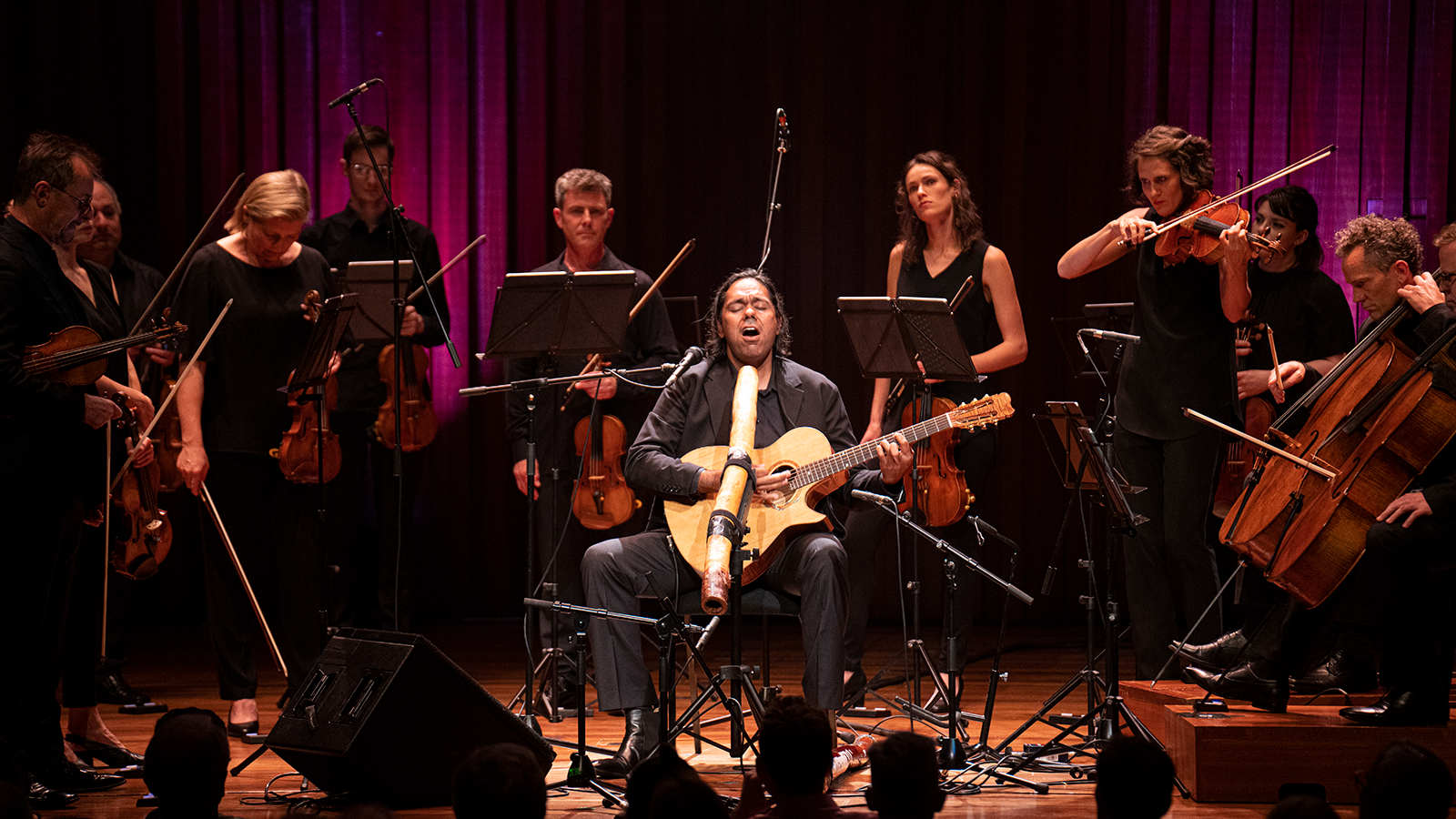
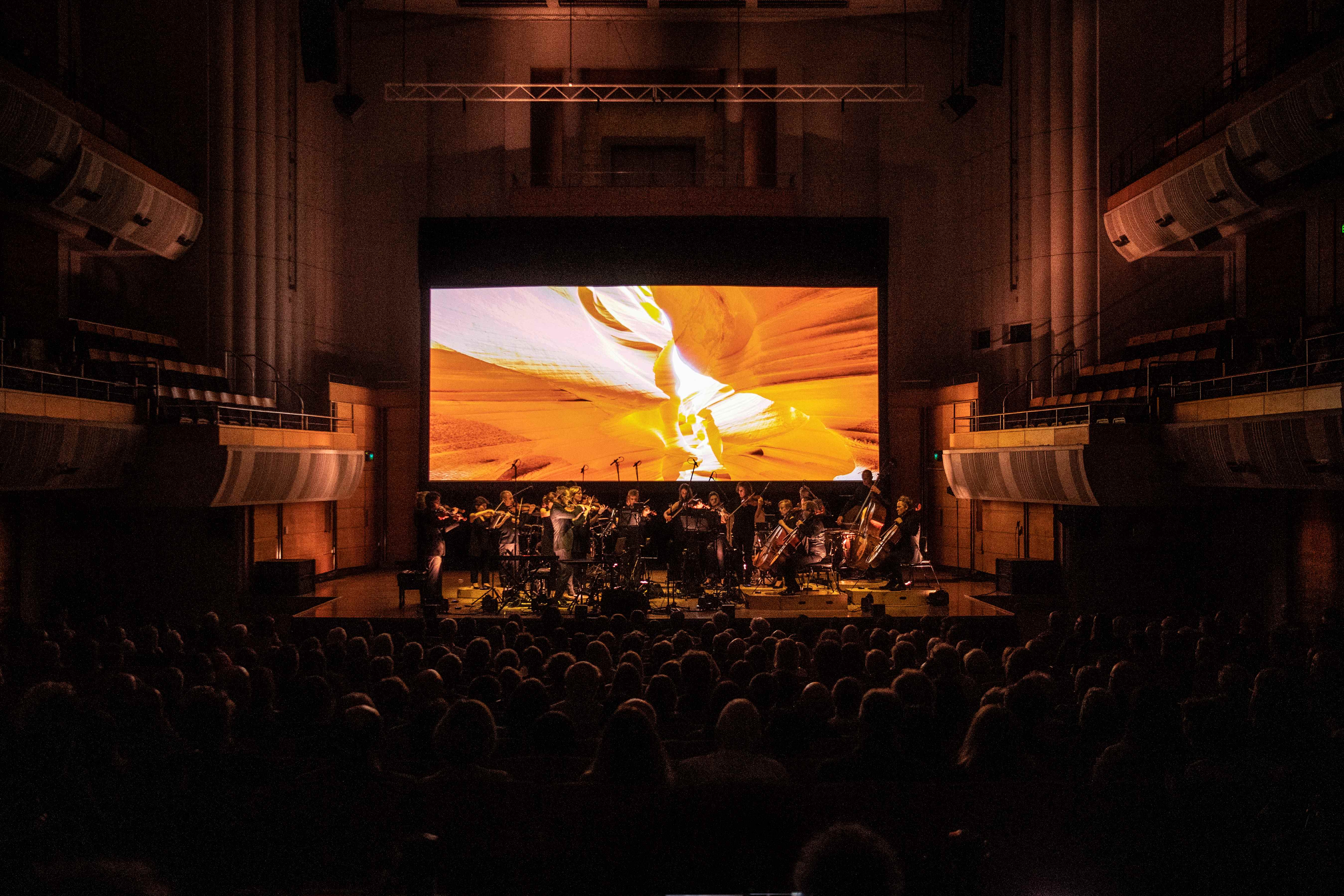
ACO 2024: River Live in Concert
Touring 1 - 16 Feb, to Newcastle, Melbourne, Canberra, Sydney, Brisbane and Perth.
